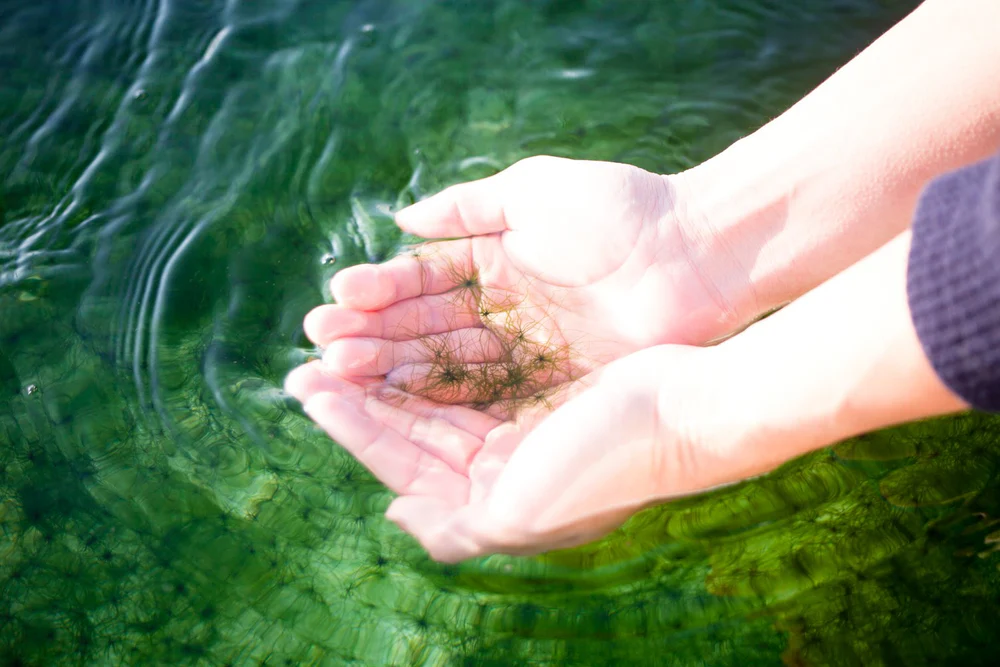
MAKE HOME-COOKED MEALS EVEN MORE ENJOYABLE! THE GIFTS FROM THE SEA
Notice: Undefined index: options in /home/xs999583/sustainaseed.net/public_html/db.sustainaseed.net/wp-content/themes/dlist/inc/directorist-support.php on line 318
Notice: Trying to access array offset on value of type null in /home/xs999583/sustainaseed.net/public_html/db.sustainaseed.net/wp-content/themes/dlist/inc/directorist-support.php on line 318
Notice: Trying to access array offset on value of type null in /home/xs999583/sustainaseed.net/public_html/db.sustainaseed.net/wp-content/themes/dlist/inc/directorist-support.php on line 318
What we do
WORLD’S FIRST LAND-BASED CULTIVATION OF SUJI-AONORI USING SUBTERRANEAN SEAWATER
Since SEA VEGETABLE COMPANY began, we have been mainly producing Suji-Aonori (green laver), the most aromatic and highest quality green seaweed. This variety was once mainly harvested from the Shimanto River in Kochi Prefecture, but yields plummeted due to rising water temperatures in the estuary. By 2020, shipments were down to zero. Declining yields at other locations have led to supplies increasingly falling short of demand. In response, our company has achieved a world’s first: the cultivation of seaweed above ground using clean, mineral-rich, subterranean seawater
By employing our patented cultivation methods and production expertise, we can now provide a stable supply of high-quality Suji-Aonori throughout the year. A comparison with the Suji-Aonori growing in the Yoshino River, in the same region, has found that our product contains between 2.5 to 4.5 times more dimethyl sulfide,
considered the main aromatic component of green laver.
Company's story
Seaweed beds are considered the “cradles of the sea”: they nurture fish, shellfish, and other creatures and help keep the marine ecosystem in balance. Due to rising sea temperatures, however, the period of greatest activity of marauders such as aigo (rabbitfish) and urchins that feed on seaweed has been prolonged, resulting in significant damage and a drastic decline in seaweed beds in many parts of the country
Confronted with this situation, our solution to the problem has been to cultivate seaweed on the sea surface.
By identifying when and where feeding damage is minimized by lowered water temperatures, and by selecting seaweed varieties best suited to the conditions, we start new cropping. Only when a greater risk of feeding damage becomes inevitable are cages then employed to continue the cultivation. We believe this strategy will provide a long-lasting solution in which seaweed can be grown in previously unexploited areas thereby enriching and nurturing the marine ecosystem.
More than 1,500 species of seaweeds inhabit the seas of Japan, all of them considered non-toxic and edible. Even so, only a few dozen varieties make their way to the table — in a country said to have the most advanced marine cuisine in the world. In other words, many types of seaweed remain untapped as potential foodstuffs. Whereas the plants of the earth have been thoroughly evaluated and various methods of cultivation and cooking established, the world of seaweed is still being discovered — indeed, the process has hardly begun.
Our company seeks to preserve the seaweed-consuming culture of the past and expand it further. To do so will support the wellbeing of both the ocean environment and humankind. Our daily activities are based on this belief.
BRINGING TOGETHER SPECIALISTS FROM VARIOUS FIELDS
Our team of marine specialists include, among others, a diver who has spent 40 years collecting and classifying seaweed around Japan, a researcher with years of experience producing algae seeds and seedlings, and an expert in water quality and nutrient analysis. Working in collaboration with other researchers from outside the company, their cross-disciplinary endeavors range from basic research on seaweed to the development of cultivation techniques.
Certain seaweed species have been in steady decline, some even approaching extinction. The food culture associated with seaweed is also threatened. By securing the endangered varieties, reviving and reproducing them, we can conserve them for the future. We are united in this cause
General Information
Gallery


